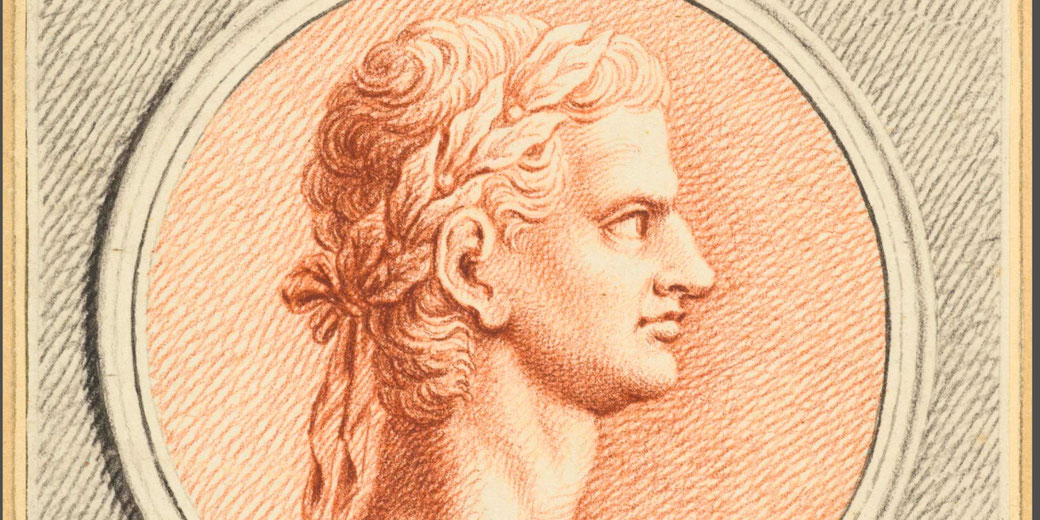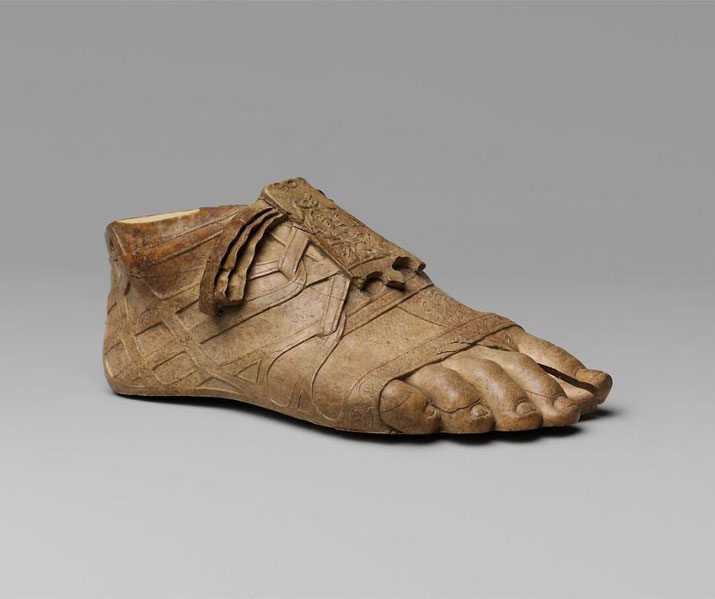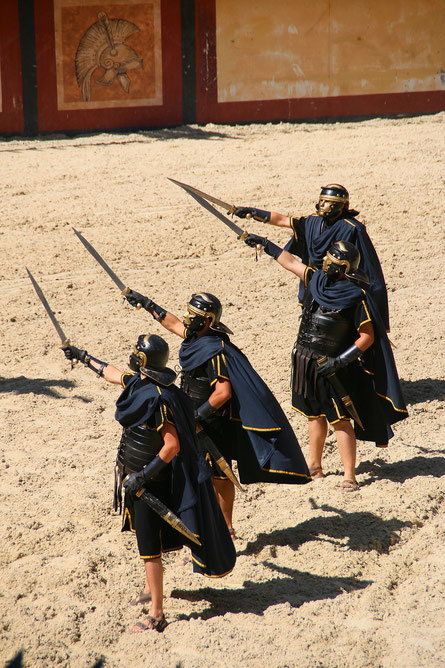Caligula: Rome's 'mad' emperor?

Most people know the name Caligula, even if they don't know much about him. When the young emperor came to power in AD 37, he enjoyed immense popularity after he made several popular reforms.
However, within months, his behavior shifted dramatically, and he quickly became infamous for his wild and crazy antics.
So, what went so badly wrong and why are historians still debating his time in power 2000 years later?
Caligula's charmed childhood
Caligula was born Gaius Julius Caesar Germanicus on August 31, AD 12, in Antium, an ancient town of Latium, southeast of Rome.
His father, Germanicus Julius Caesar, was a popular general who was beloved by the common people of Rome.
His mother, Agrippina the Elder, was a granddaughter of Emperor Augustus. Caligula had three sisters, Agrippina the Younger (who would later become the mother of the emperor Nero), Drusilla, and Livilla, and two brothers named Nero and Drusus.
Caligula's childhood was fairly happy and uneventful. He grew up in Rome and spent time in Germany with his father while he was on military campaign.
It is here that he received the name 'Caligula', which means 'little boots'. This was a term of endearment from his father's soldiers.

A series of family tragedies
In AD 19, when he was just 7 years old, his father died suddenly. Rumours spread that Germanicus had been poisoned on the orders of emperor Tiberius, although this was never proven.
However, the mysterious nature of his father's death would have a profound effect on young Caligula.
The death of Germanicus left Caligula and his siblings without a father figure.
Their mother, Agrippina the Elder, became paranoid that her husband's enemies would try to harm her children.
She kept them isolated from the outside world, which likely contributed to Caligula's later problems with mental illness.
If the young Caligula did not have reason enough to hate Tiberius for the suspected role in his father's death, he would soon have more.
Agrippina was then refused permission to remarry by Tiberius, for fear that any new husband would be a potential rival to the imperial throne.
Then, in AD 29, both Agrippina and Caligula's brother, Nero, were banished from Rome.
In the absence of any further immediate family, Caligula was sent to live with Tiberius' own mother (who was Caligula's great-grandmother), Livia, and then his grandmother, Antonia Minor.
In AD 30, his brother Drusus was jailed for treason, and Nero died while in exile. In the following year, AD 31, Caligula was sent to live with the emperor Tiberius on the island of Capri.
During the next six years, he was essentially a prisoner to the emperor. Caligula learnt quickly to always show respect for his captor in order to prevent being killed.
Some ancient historians identify this time as when Caligula learnt how to smile in the presence of his enemies.
Caligula's polite front to Tiberius seems to have worked, as Tiberius began giving the young man political opportunities.
In AD 33, Caligula was given the position of quaestor. However, in the same year both Caligula's mother and his brother Drusus, died while in prison.
A story is told in the ancient sources that Caligula sought to avenge his family's deaths by attacking Tiberius with a knife in his private chambers, but for some reason, this failed.
Around this time, Caligula built a political connection with the new Praetorian Prefect, Naevius Sutorius Macro.
Macro acted as Caligula's advocate with Tiberius, which seemed to be an effective strategy, as in AD 35, Tiberius announced that Caligula had been named the joint heir of Tiberius' estate, with Tiberius' grandson, Tiberius Gemellus.
How did Caligula become emperor?
The emperor Tiberius died on the 16th of March, AD 37. It was rumoured that the Praetorian Prefect, Macro, may have been involved.
If this was the case, it may have been a way of helping Caligula finally get revenge on the aging emperor.
Following Tiberius' death, Caligula officially became co-emperor of the Roman Empire with Gemellus, as had been stipulated in Tiberius' will.
However, Caligula and Macro moved quickly to have the will modified, as they claimed that Gemellus was 'not of sound mind'.
Within the year, Gemellus would be killed by order of Caligula.
Since the old emperor, Tiberius, was so detested by the end of his reign, the Romans welcomed the young ruler with open arms when the Senate confirmed him as emperor on the 18th of March, AD 37.
Caligula was just 24 years old.
The common people of Rome were very happy to have the son of the famous Germanicus as their leader.
There were high expectations on the young emperor to treat the people and the Senate well.
Caligula seemed delighted with this positive reception and seemed to work hard to show that he was the opposite of Tiberius.
Caligula began his reign with a seven-month period of relative peace and prosperity.
He ended Tiberius's treason cases, recalled exiles, and paid out long-overdue pay raises to the Praetorian Guard.
He finished a number of construction projects, restored crumbling temples, started work on new aqueducts, and even erected a new amphitheatre in Pompeii.
He made some popular reforms, such as opening up the food supply to the poor and increasing salaries for soldiers.
What caused Caligula's madness?
Six months after taking the throne, in October of AD 37, Caligula fell ill and appeared to experience a serious mental episode.
It may have been depression, epilepsy or even the result of brain damage from a fall he suffered as a child. The exact details of his sickness are still not clear.
Regardless, after he recovered, the people around him noticed a stark difference in his character and behaviour.
Caligula became paranoid and jealous, believing that everyone was seeking to depose or kill him.
In AD 38, he even had the Praetorian Prefect, Macro, killed for rumoured disloyalty.
To calm his fears about potential betrayers in his midst, Caligula surrounded himself with 'yes-men' and sycophants, and became increasingly isolated from the common people.
Caligula also developed a taste for luxury and excess. He built himself a lavish palace on the Palatine Hill, where he held wild parties and orgies.
Also, he spent lavishly on public works projects, such as building a new aqueduct to bring water to Rome.
But most of the money went into his own pockets or was wasted on frivolous pursuits.
In particular, he ordered the construction of two massive ships on Lake Nemi. They were considered technological marvels of the time and are believed to have been used for religious ceremonies.
Sadly, at this time, Caligula’s favorite sister, Drusilla, died in AD 38, and her death deeply affected him; he deified her posthumously, which was an unprecedented honor for a woman at the time.
The following year, in AD 39, Caligula ordered his engineers to build a large wooden bridge across the Bay of Naples.
It was achieved by placing wooden planks on a long row of ships, over two miles long. It began in the resort town of Baiae and stretched to the port of Puteoli.
Caligula seemed to be copying the similar construction project of the Persian king Xerxes, who used a similar bridge to cross the Hellespont during the Greco-Persian Wars.
Once completed, Caligula rode over it on his favourite horse, named Incitatus.
Then, in AD 40, Caligula claimed to be preparing for an invasion of Britain and assembled his armies in northern France.
However, instead of boarding the ships and crossing the channel, instead, he ordered his men to collect seashells from the beach.
Apparently, he used this to show that he had won a 'victory' over the sea-god, Poseidon.
The economic crisis in Rome under Caligula
By the end of AD 39, Rome was in financial crisis. Caligula had spent so much of the government's money on his personal projects that there was very little left to spend when difficulties arose.
At this time, a famine struck Italy, which left many Roman citizens starving.
To his credit, Caligula reorganized the administration of the grain supply to Rome by ordering shipments of grain to be brought in from Sicily and Egypt.
However, his efforts were often undermined by his erratic spending and the lack of funds meant that there was still not enough for the city's large population.
It is due to this event that the Roman people began harbouring resentment towards the young emperor.
All of the people's hopes of a new 'golden age' under Caligula were dashed.
Caligula's conflict with the Senate
Following the events of late AD 39, the Senate and Caligula began struggling with each other over who truly held the power in Rome.
During the reign of Tiberius, the Senate had been permitted to operate without interference from the emperor for many years.
With Caligula's ascension to the throne, the Senate had been shocked at how little input they had in the running of the government or how money was spent.
Resentful of Caligula's autonomy, senators began complaining that they were being treated no better than slaves, or were not being treated with the respect they felt they deserved.
In addition, as Caligula's behaviour became more erratic, he reintroduced the treason trials to remove any threats to his power, which included a number of senators.
Caligula personally ordered a consul to resign from office and even executed some other senators.
Caligula was angered by senatorial claims to power and he seems to have delighted in demonstrating to the senators how little they mattered.
To stress his point, the emperor forced some to serve him meals, to run next to his chariot on journeys, and even boasted that he alone was responsible for appointing political positions every year.
In one particularly notorious incident Caligula announced that, if he wanted to, he had the power to make his favourite horse, Incitatus, a consul if he so desired.
It is not clear if this was a genuine attempt by Caligula to elevate an animal to political office, or if he was simply humiliating the Senate.
The Senate's anger fueled a number of conspiracies and assassination attempts against Caligula.
Even Caligula's brother-in-law was found to be conspiring with senators to get rid of him.
The reign of terror and assassination
As Caligula's mental state deteriorated, his behavior became more and more erratic.
According to ancient sources, Caligula even declared himself a living god and ordered temples to be dedicated to his worship, including one in Miletus where he was to be worshipped as a new Zeus.
He had statues of himself erected in temples all over Rome, and even ordered that his head be placed on coins.
He also began to persecute anyone who he saw as a threat, real or imagined. He ordered the execution of hundreds, even thousands, of people on trumped-up charges. No one was safe from his wrath.
Eventually, the reign of terror only ended when Caligula was assassinated on January 24, AD 41, during a series of games held in the Palatine Games.
The group of three conspirators were led by Cassius Chaerea, a tribune of the Praetorian Guard.
They stabbed him to death in his own palace and killed his wife and baby daughter as well.
His rule had lasted just four years, but it was long enough to earn him a place in history as one of Rome's most notorious emperors.
Caligula's only surviving adult relative, Claudius, was then declared the next emperor of Rome.

Was Caligula a good or bad emperor?
What drove Caligula to commit such heinous acts? Was it mental illness, or a desire for power and money? Or was he simply a sadist who enjoyed causing pain?
Modern historians have begun to reassess Caligula and the reputation for his 'madness'.
They point to the fact that many of his actions, such as building projects and public works, were actually popular with the people.
And his persecution of the Senate was motivated more by politics than mental illness.
Some point out that there may be medical reasons for his change in behaviour. For example, it's possible that he suffered from epilepsy, which can cause mood swings and erratic behaviour.
Whatever the case may be, there's no denying that Caligula was one of Rome's most controversial and notorious emperors.
Further reading
What do you need help with?
Download ready-to-use digital learning resources
Copyright © History Skills 2014-2025.
Contact via email
With the exception of links to external sites, some historical sources and extracts from specific publications, all content on this website is copyrighted by History Skills. This content may not be copied, republished or redistributed without written permission from the website creator. Please use the Contact page to obtain relevant permission.





